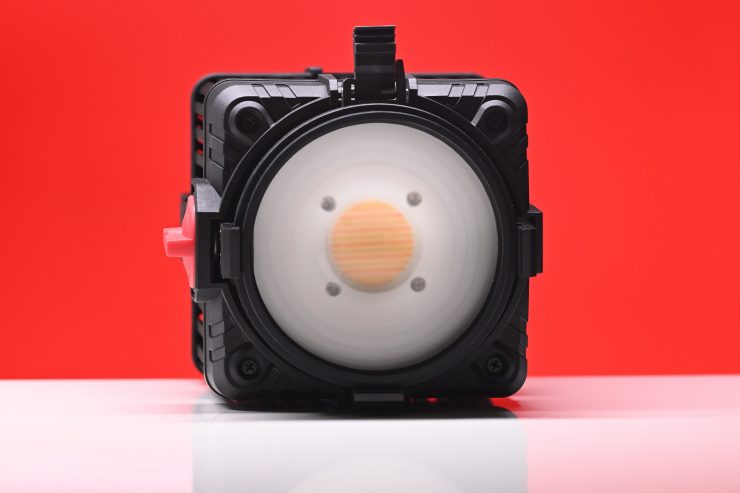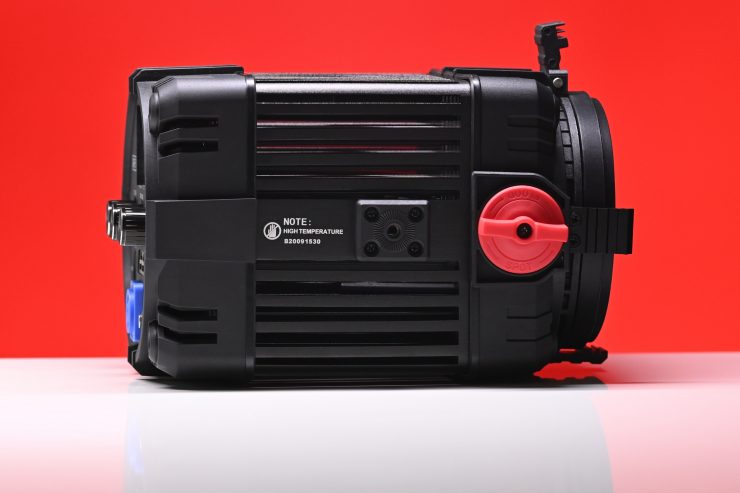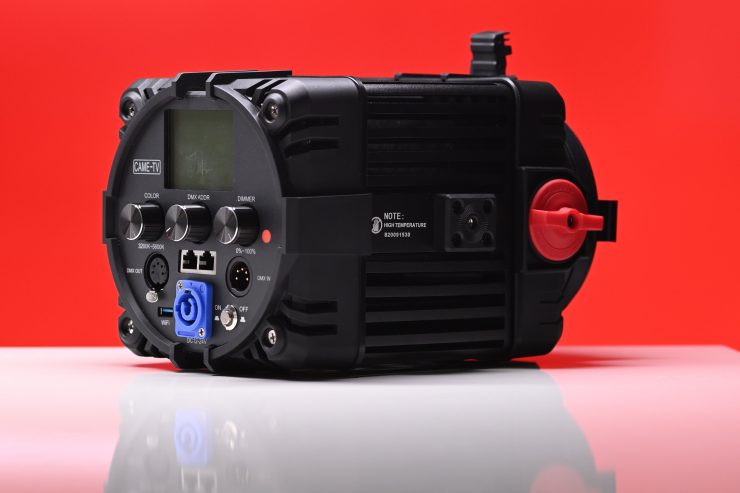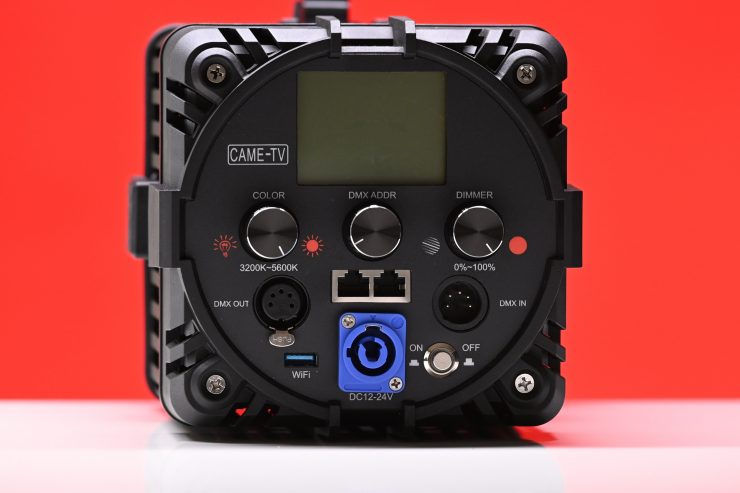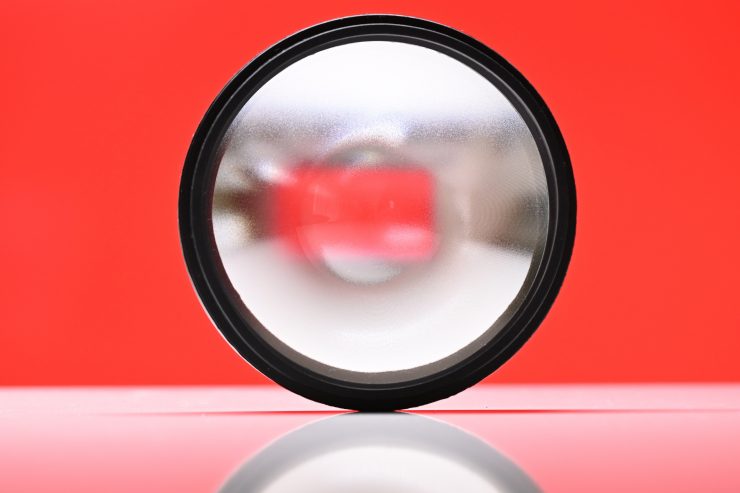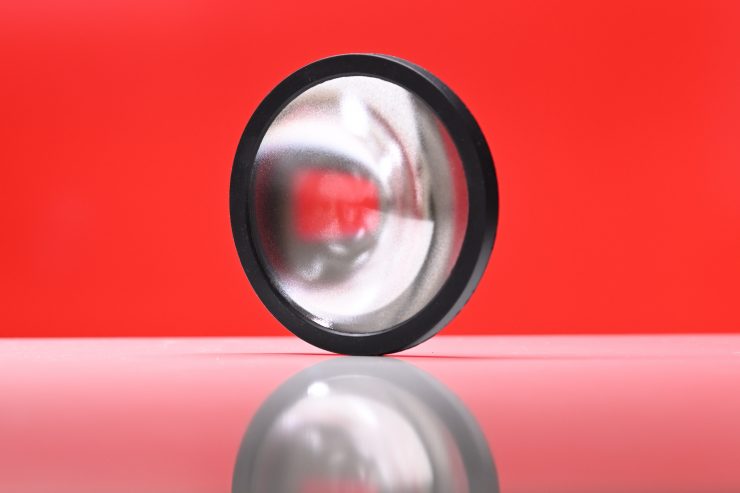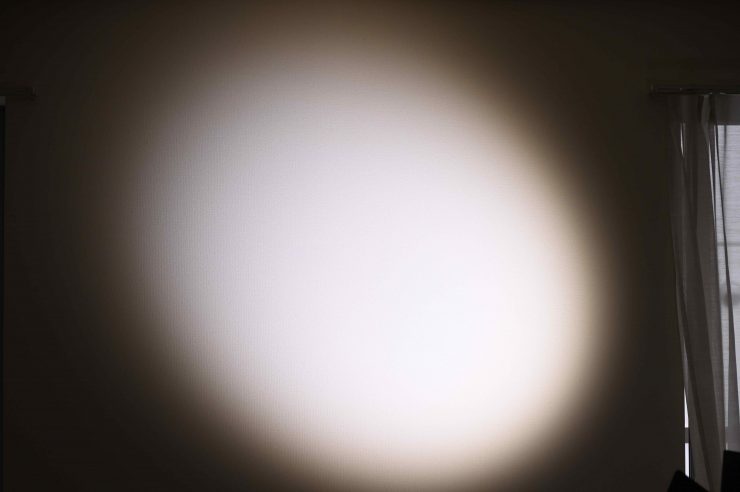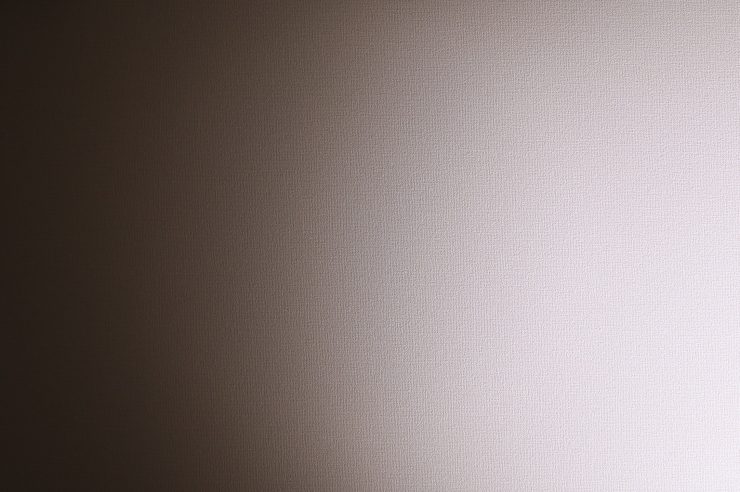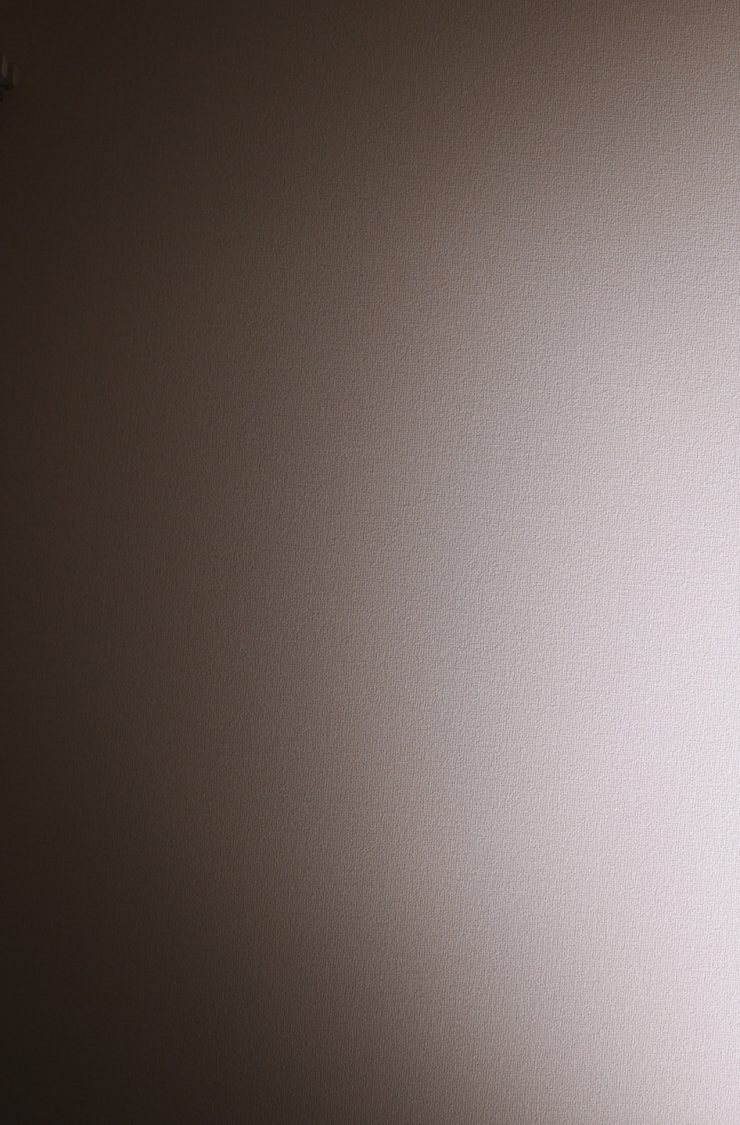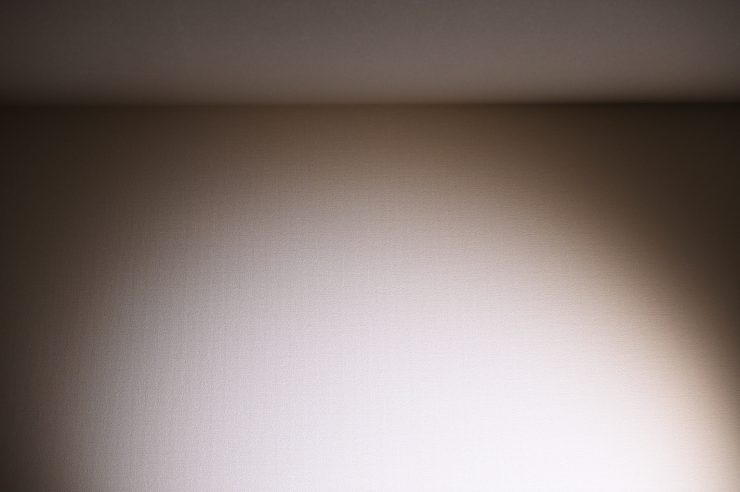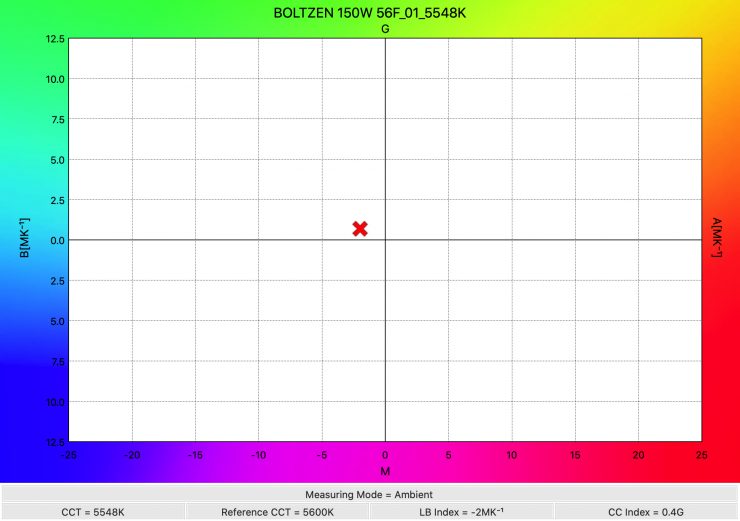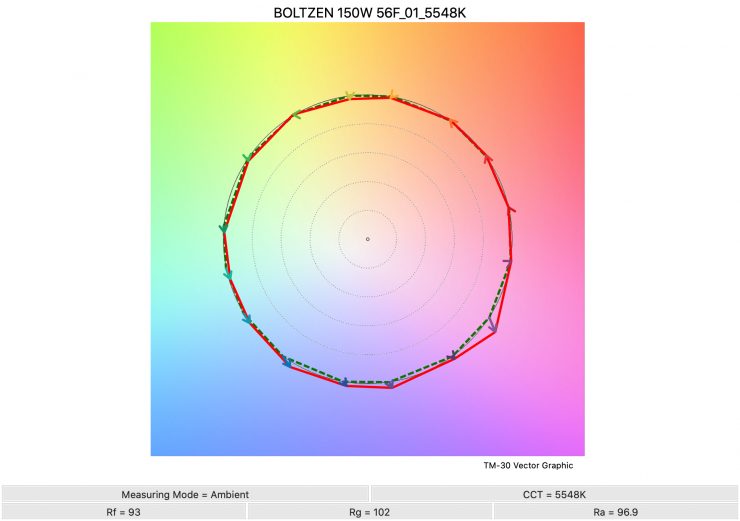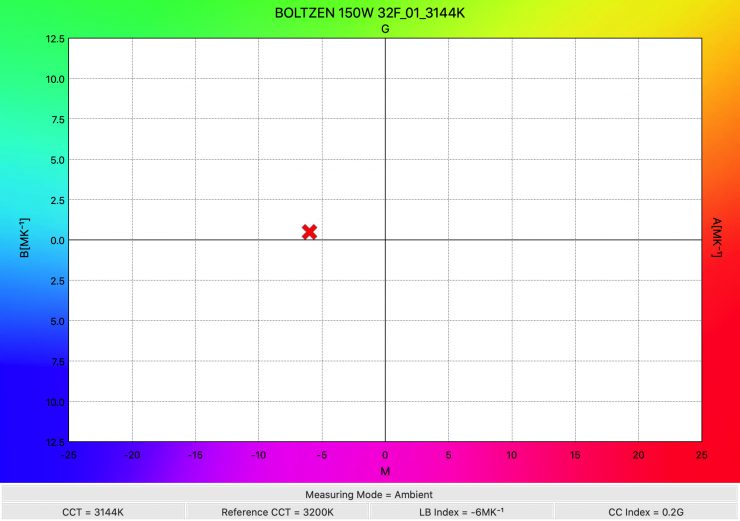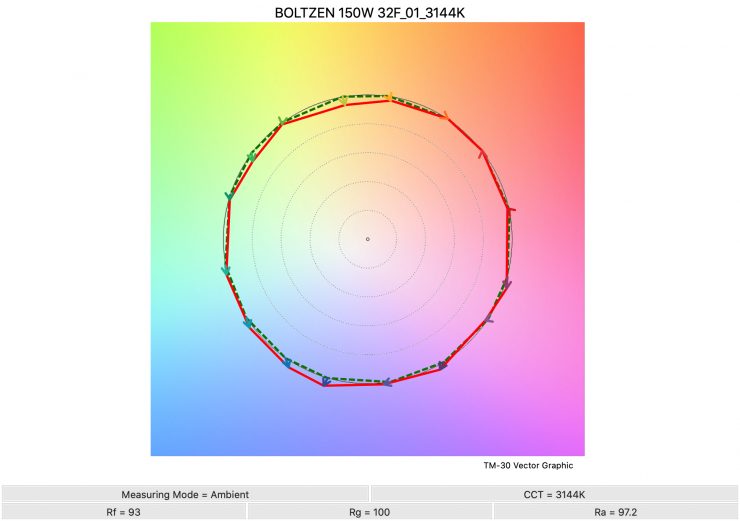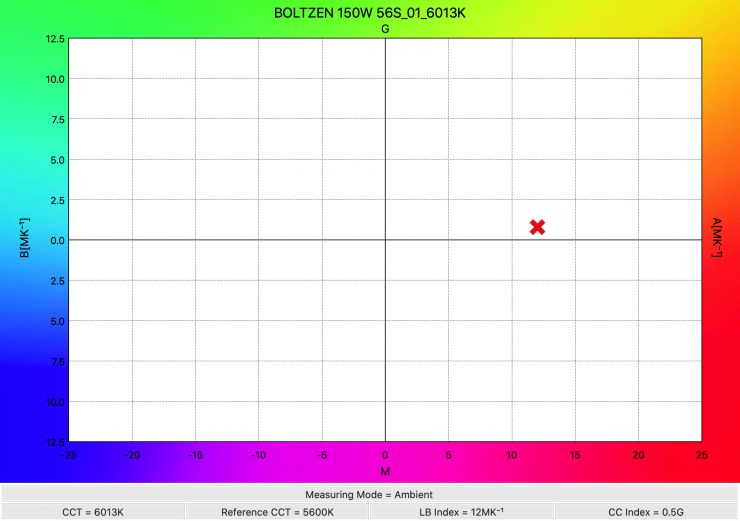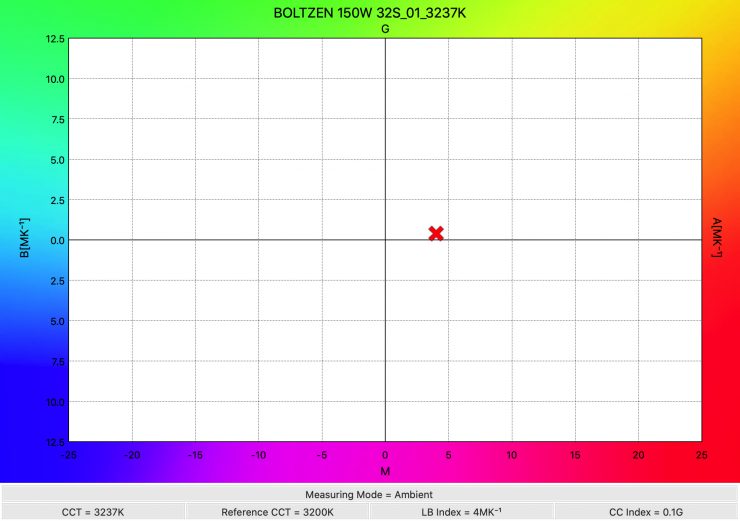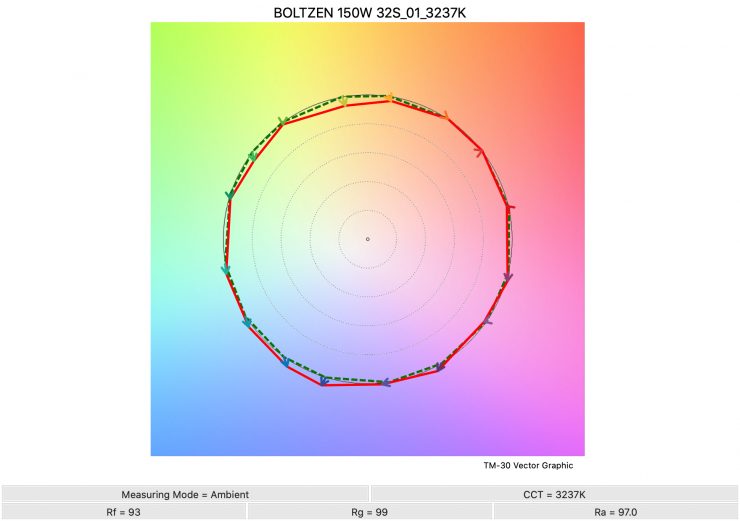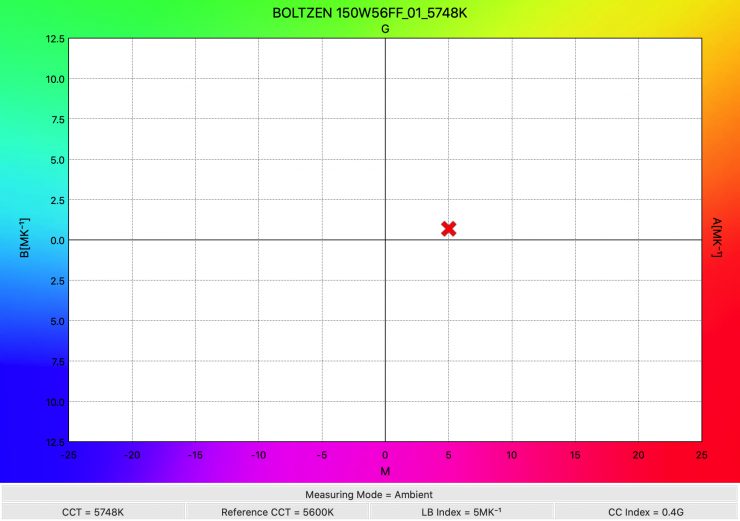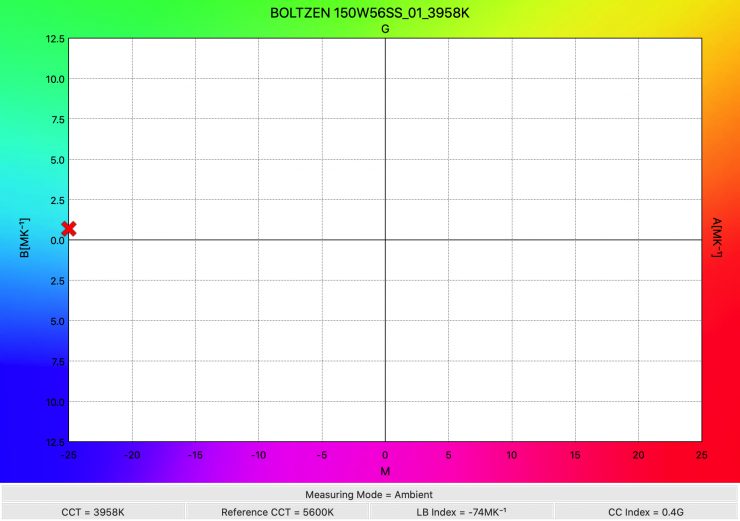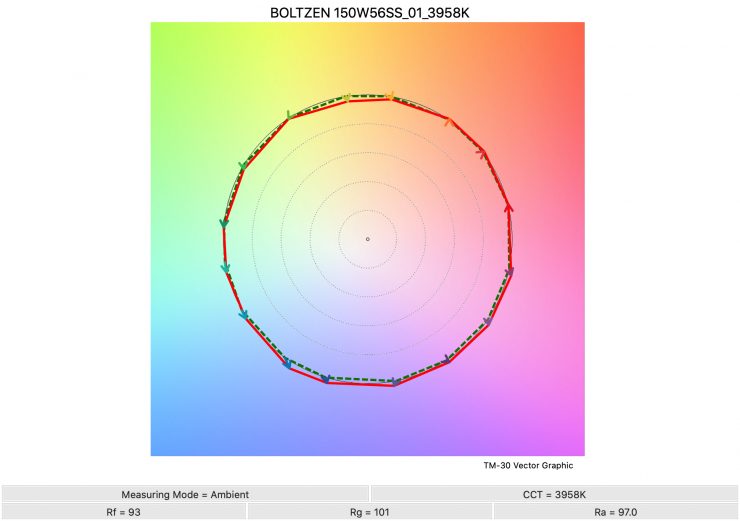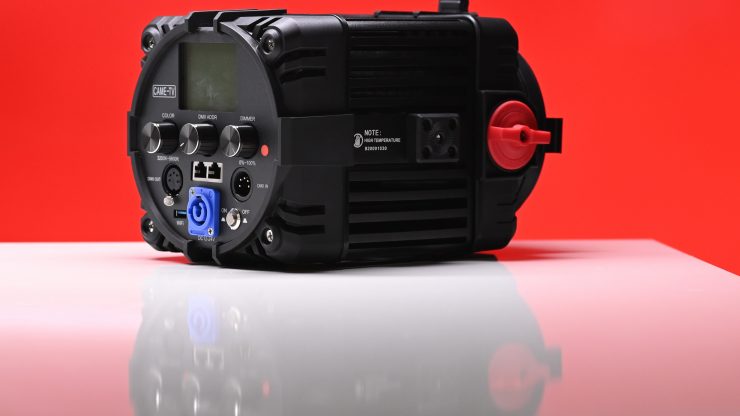
The CAME-TV Boltzen 150W Fresnel Focusable LED Bi-Color is an affordable, mid-sized LED Fresnel that looks to be very suitable for one-man bands and small crews.
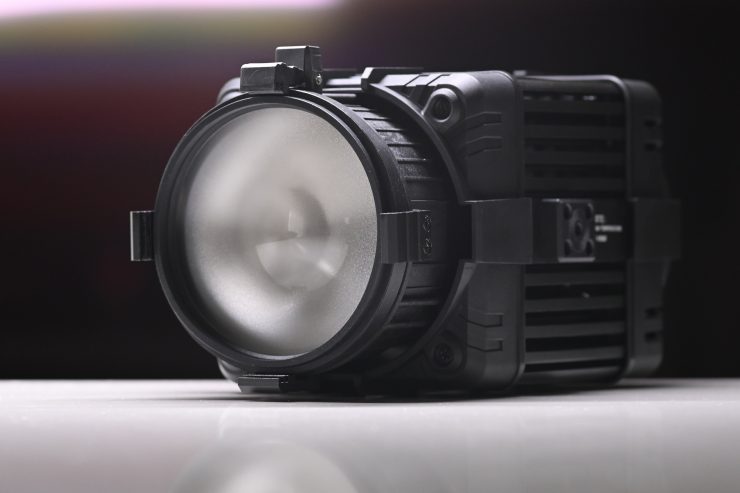
Over the last few years, we have seen mid-sized LED Fresnel fixtures starting to become more prevalent in the market. Typically, Fresnel LED fixtures have either been small and compact or large and heavy. The CAME-TV 150W Fresnel Focusable LED Bi-Color has been designed to fill that gap where you need something more powerful than a small fixture, but you don’t want to have to carry around a large light.
CAME-TV has been making the Boltzen range of LED Fresnel fixtures for quite some time now, and the 150W Fresnel Focusable LED Bi-Color is essentially a bi-color version of the existing daylight only 150W Boltzen
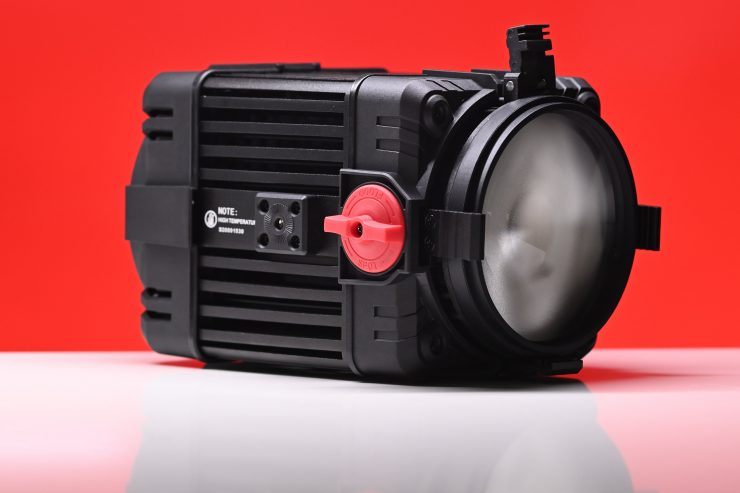
A mid-sized LED Fresnel is well suited for use by traveling shooters and one man operators who want a light that has a fairly wide beam spread for lighting up larger areas, but also the versatility to have something that can be spotted up. It weighs in at 4.3kg (9.48 lb) with the yolk attached. While it is not super small, it isn’t going to take up too much space in a bag.
The beam angle is adjustable from 38 to 90 degrees. If you want to further control the spill you can use the included barn doors.

Quite a few LED lights on the market, including the CAME-TV Boltzen 150W Fresnel, are using COB technology. COB stands for “Chip On Board” where multiple LED chips are packaged together as one lighting module. The advantage of COB LEDs being multi-chip packaged is that the light-emitting area of a COB LED can contain many times more light sources in the same area that standard LEDs could occupy. This results in a greatly increased lumen output per square inch.
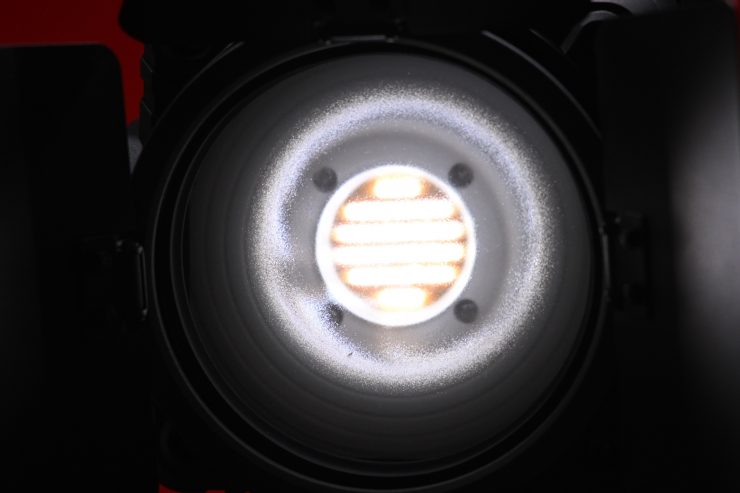
The biggest problem with COB LED lights is that unless you diffuse them they are very bright to look at and unsuitable for directly lighting talent.
What do you get?
- 1x 150w Boltzen Light with Yoke
- 1x Removable Barndoors
- 1x Power Adapter
- 1x Power Cable
- 1x Soft Filter
- 1x Milky-White Filter
- 1x Steel Safety Cable
- 1x DMX RJ45 Cable
- 1x Carry Bag with Shoulder Belt
Build quality
The light feels fairly solid in the hand and the overall build quality is reasonably good. The yolk frame locks off nice and tightly and the housing feels solid enough. The buttons and dials on the back of the light are nice for a light at this price point. The build quality of the Bolzen series has certainly improved over time.
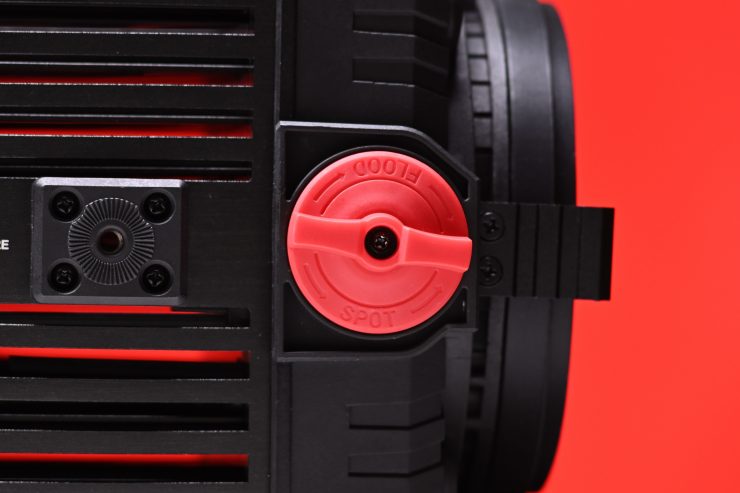
My only complaint is that the spot/flood focusing mechanism isn’t particularly smooth. The tension on it is all over the place.
Fresnel lens
The light uses an acrylic Fresnel lens and not a proper glass fresnel lens like you with find in say a Kinotehnik Practilite or Dedolight. Usually, an acrylic Fresnel lens will have a harsher fall off and be subject to color fringing on the edges when compared to using a proper glass Fresnel lens.
I tested out the color fringing and it is pretty well contained. I couldn’t see any prominent color fringing. Like a lot of affordable Fresnel LED lights, the fall-off can be quite hard.
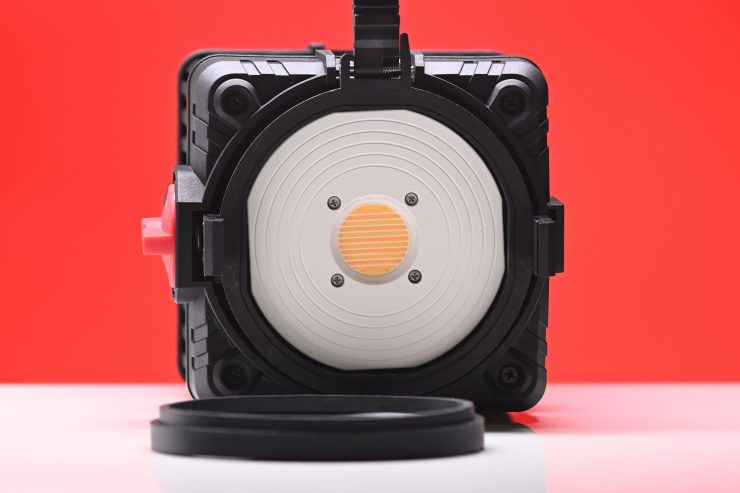
The benefit of CAME-TV using an acrylic Fresnel lens is that you can physically remove it from the fixture. This allows the beam spread to be increased and gives the light an added touch of versatility.
The Boltzen doesn’t operate in exactly the same way as a traditional Fresnel light, but the results are the same. With most Fresnel lights the reflector/lamp tray moves forwards and backward away or towards the lens. As the lamp (with its reflector) is moved towards the lens, the beam becomes wider, and as it moves away from the lens, the beam becomes narrower. With the Boltzen however, the LED element stays still and the lens is moved forwards or backward. This is intended to accomplish the same idea in a slightly different way. Overall the spot and flood functions still work well.
Controls & Features
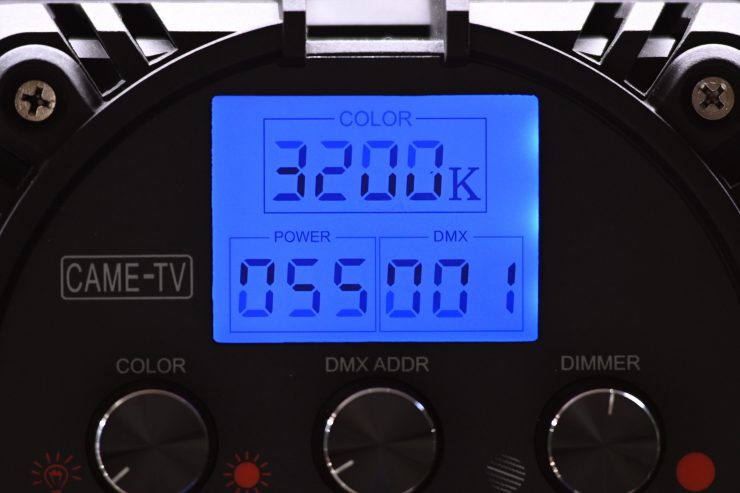
The light has a clearly laid out control surface and a nice sized LED display. The LED display shows you the brightness level, Kelvin color temperature, and all the other relevant information about the light. There is no confusing menus, in fact, there isn’t even a menu.
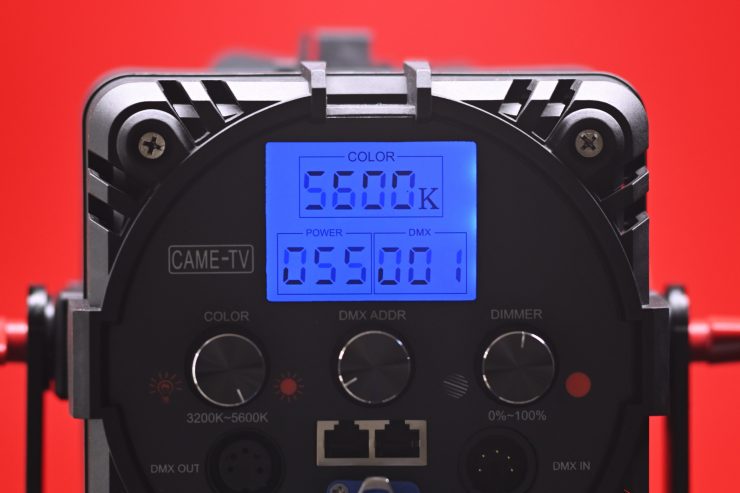
There is also an on/off button, a dimmer knob to adjust the brightness, and another to adjust the Kelvin color temperature. The light can be dimmed in 1% increments from 100% all the way to 2%. The Kelvin color temperature can only be adjusted in increments of 100K.
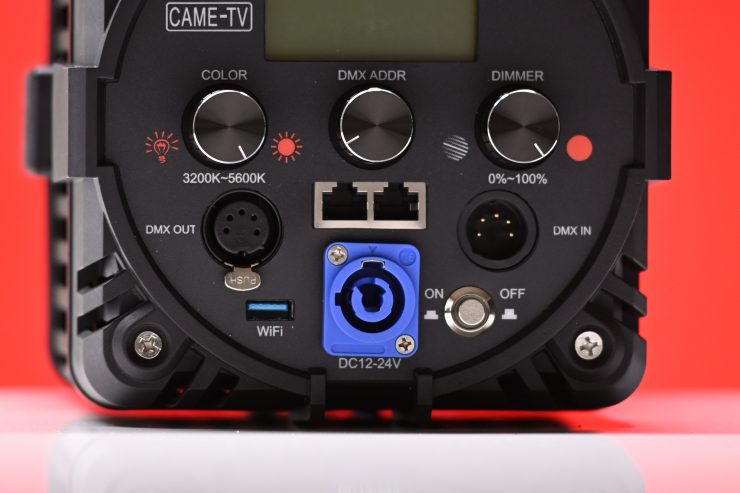
The light also has a WiFi module slot, a DC 12-24V power inlet, DMX IN/OUT, two ethernet ports, and a DMX channel adjustment dial.
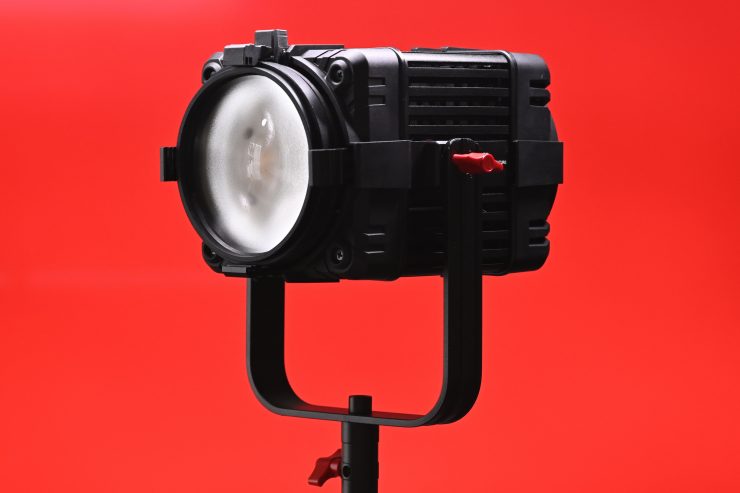
The built-in fan is reasonably quiet, but you can still hear it. It’s a good thing there is a fan though as the fixture does get very hot in a short period of time. So much so that there is a warning on the light that states: Note- High Temperature.
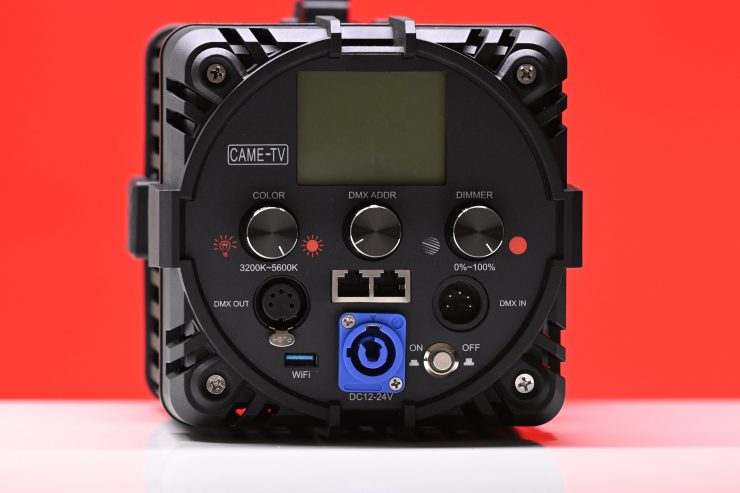
The CAME-TV has all its controls on board, but this does make it harder to make adjustments to the light once it is up high on a light stand. The other alternative is you can buy an optional WiFi module that allows you to control the light remotely using an iOS app.
Power & Powering Options
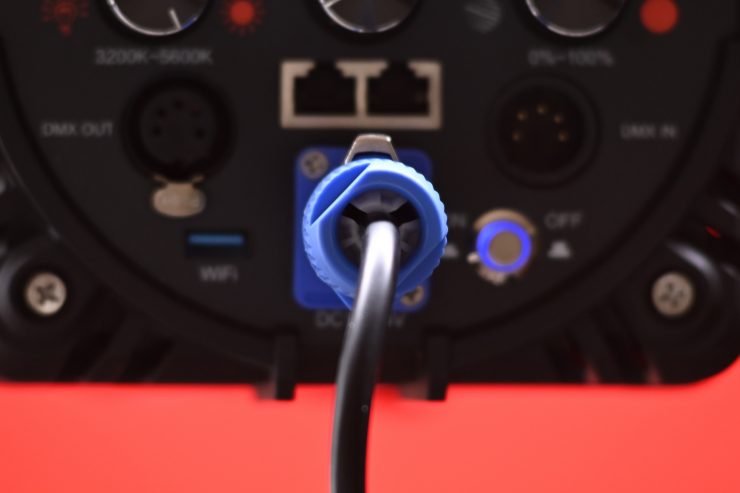
The CAME-TV Boltzen 150W Bi-Color will run off any 110V-240V mains source, or you can use the included Powercon to D-tap cable to power the light off a camera battery. Remember this light draws 150W so you will need a battery that can provide at least that amount of power. CAME-TV also sells an optional V-lock battery and V-Lock battery plate.
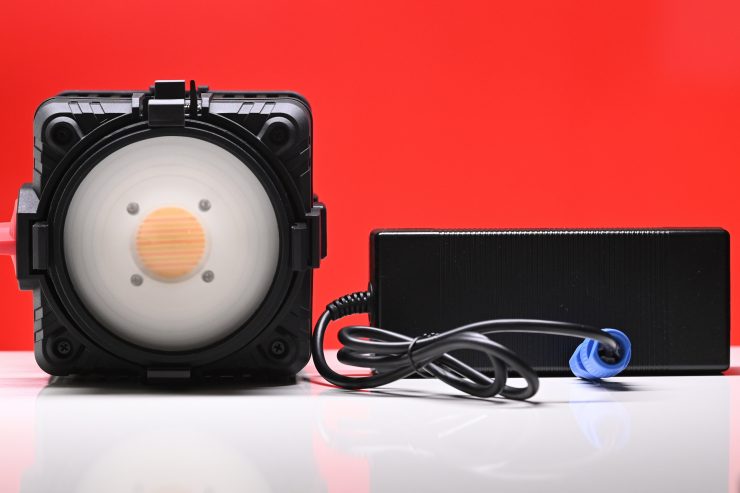
The light uses quite a large external power supply and it has a very short cable on it. This makes it a pain to use when you have the light up on a light stand. I wish CAME-TV had have put some sort of lanyard on the power supply unit so you could attach it directly to a light stand.
Photometrics
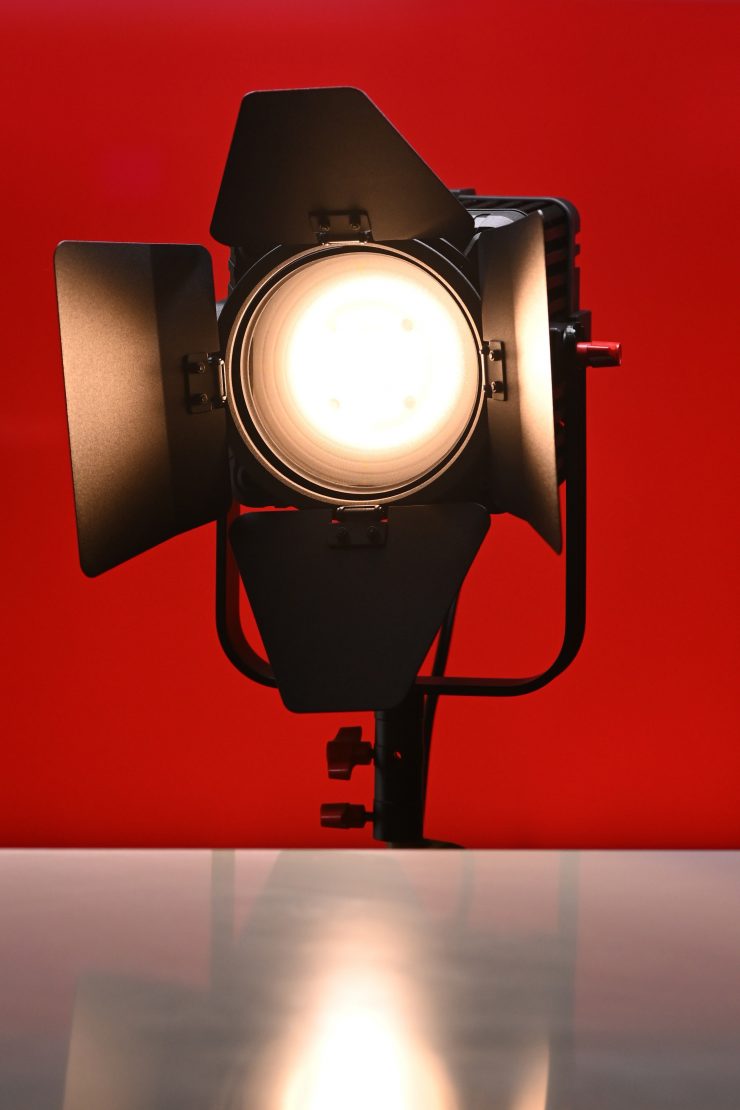
Photometric scores can only tell you so much about a light, but they are still very relevant and with readings such as SSI we can see how well they match other lights.
Output & Kelvin Color Temperature
5600K (Flood)
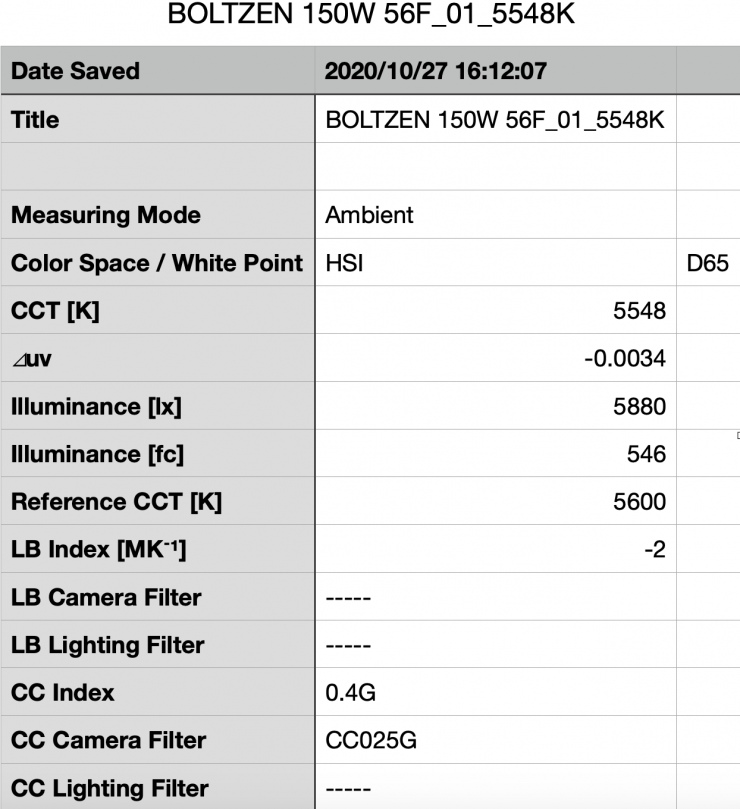
I tested the output of the light with a Sekonic C-800 at a distance of 1 meter (3.28ft) in a controlled environment. Above you can see that when the light was set in its full flood position at 5600K it outputted 5880lx.
As far as replicating a 5600k source it recorded a Kelvin color temperature of 5548K. This tells me that the light is fairly accurate at replicating a 5600k source. The output is also pretty good for a light this size.
3200K (Flood)
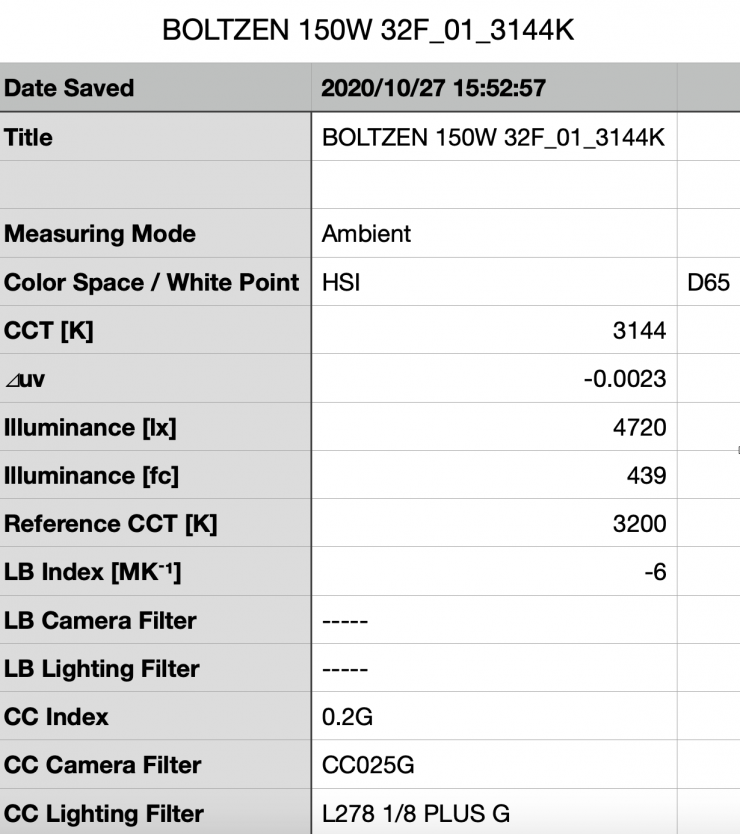
Above you can see that when the light was set in its full flood position at 3200K it outputted 4720lx. This was 24.6% less than what it outputs at 5600K.
As far as replicating a 3200K source it recorded a Kelvin color temperature of 3144K. This tells me that the light is fairly accurate at replicating a 5600k source.
5600K (Spot)
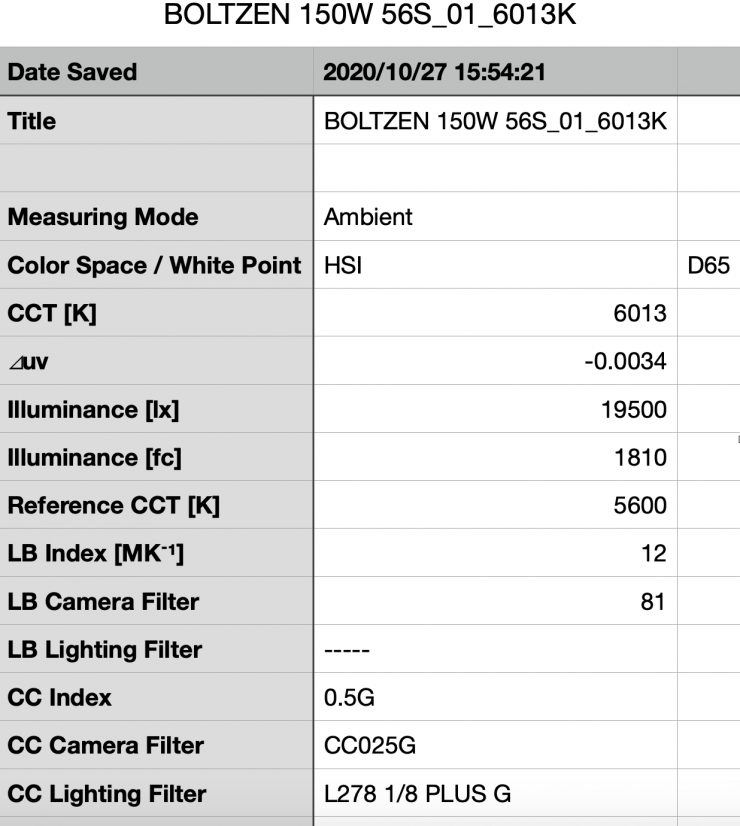
Above you can see the output and Kelvin color temperature when I set the light in its full spot position at 5600K. It recorded 19500lx at a distance of 1 meter (3.28ft).
As far as replicating a 5600k source it recorded a kelvin color temperature of 6013k. In the full spot position, the Kelvin color temperature is noticeably colder than when it is used in its fully flooded position. The output in the full spot position was good for a light this size.
3200K (Spot)
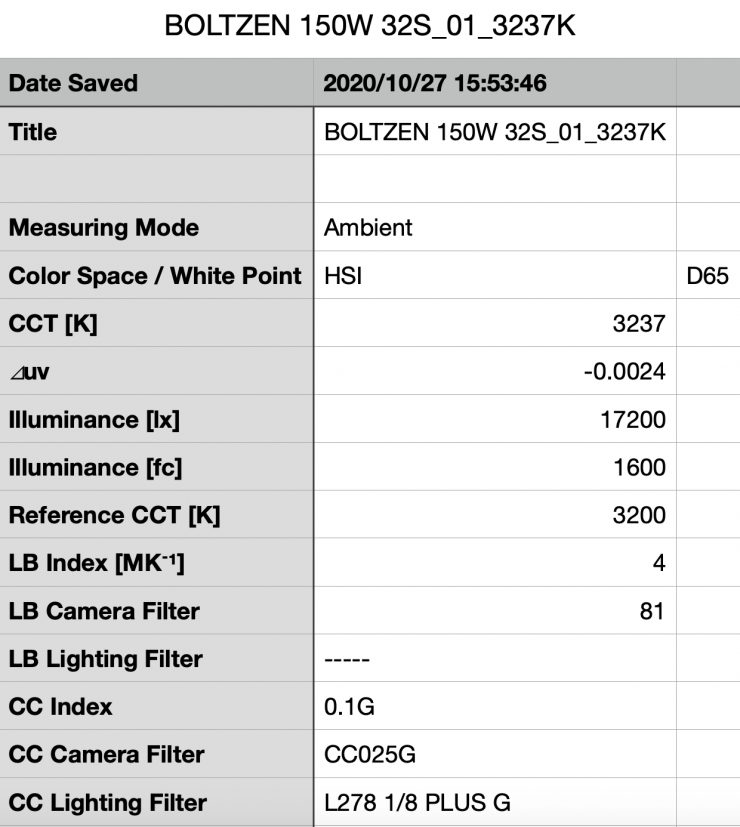
Above you can see the output and Kelvin color temperature when I set the light in its full spot position at 3200K. It recorded 17200lx at a distance of 1 meter (3.28ft).
As far as replicating a 3200k source it recorded a kelvin color temperature of 3237K. In the full spot position, the Kelvin color temperature is a lot more accurate than when the light is in its full spot position and used at 5600K. The output in the full spot position was good for a light this size.
Battery Powered Output
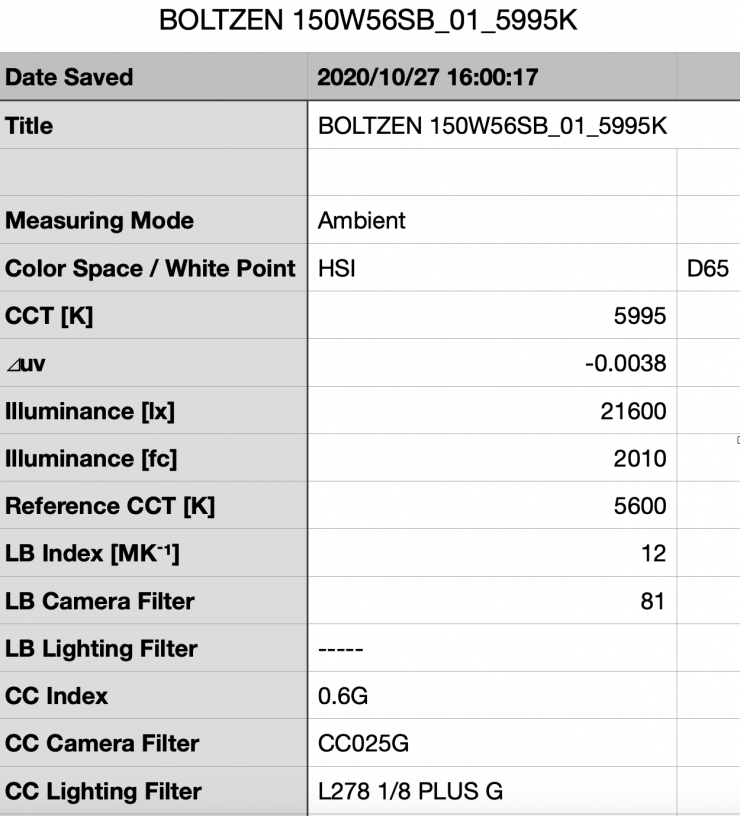
I was also interested to see if there was any output lost when running the light off a camera battery, so I tested it at 5600K in its full spot position. Above you can see the results. It recorded 21600lx at a distance of 1 meter (3.28ft). In some what of a surprise, the light had 1100lx more output than when run off mains power. I cannoy explain that result.
Open Face
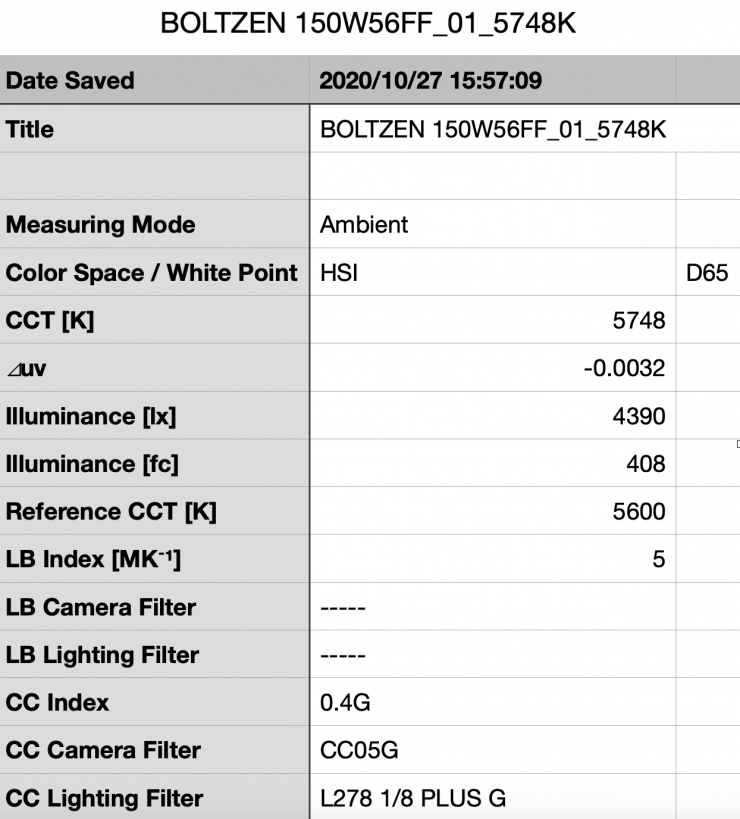
As you can remove the Fresnel lens from the light, I thought I would test it at 5600K to see how much output it had. Above you can see the results. It recorded 4390lx at a distance of 1 meter (3.28ft). By removing the Fresnel lens you get a broader beam, but you lose 33.9% of output.
As far as replicating a 5600K source it recorded a kelvin color temperature of 5748K.
Milky-White Filter
The CAME-TV Boltzen 150W Bi-Color Fresnel also comes with a Soft Filter so I thought I would also test the light with that filter as well. I was interested to see how much output was lost when the light was being used at 3200K in the full flood position.
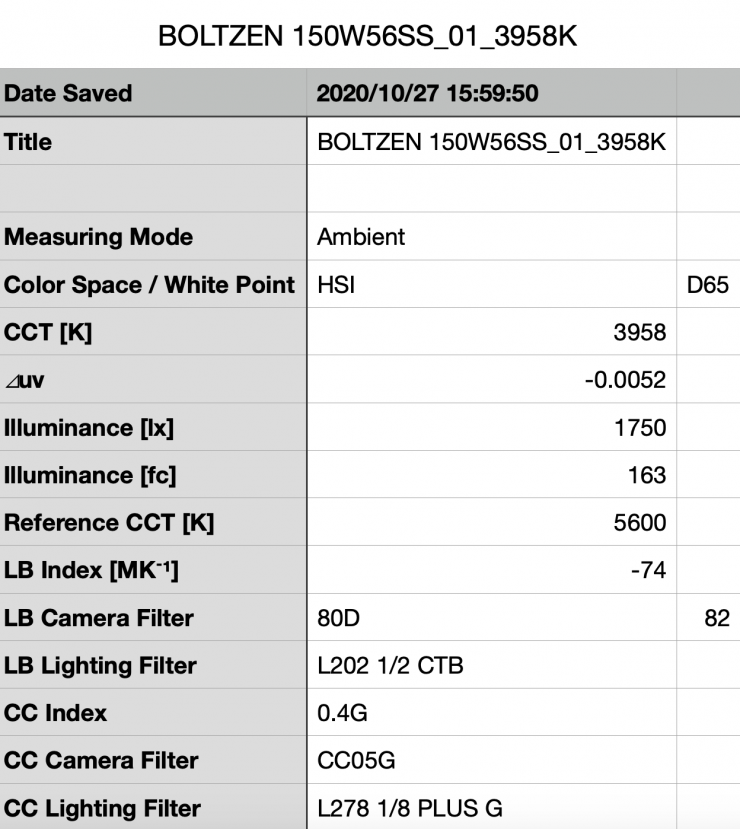
Above you can see the results. It recorded 1750lx at a distance of 1 meter (3.28ft). This means that the Milky-White filter is cutting the output of the light by just under 170%.
As far as replicating a 3200K source it recorded a kelvin color temperature of 3958K. This means that the Milky-White filter is dramatically changing the Kelvin color temperature of the light by more than 800K.
Summary of Output & Kelvin Color Temperatures
| OUTPUT | KELVIN | |
| 3200K (Flood) | 4720lx | 3144K |
| 3200K (Spot) | 17200lx | 3237K |
| 4400K (Flood) | 4460lx | 4200K |
| 4400K (Spot) | 20500lx | 4409K |
| 5600K (Flood) | 5880lx | 5548K |
| 5600K (Spot) | 19500lx | 6013K |
Color rendering
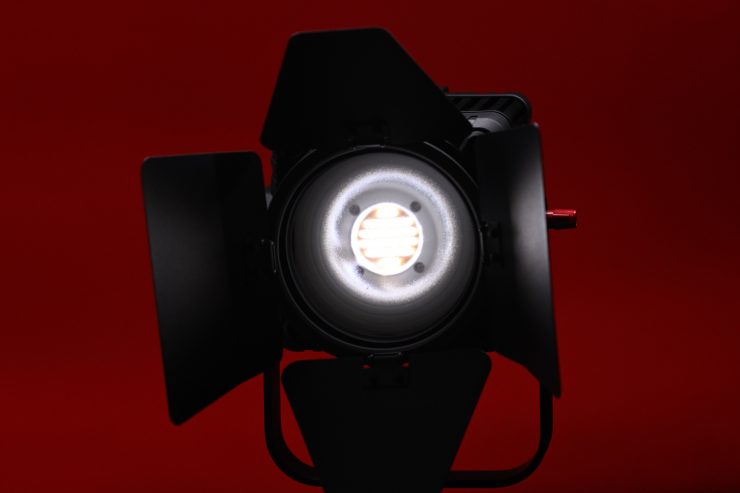
So now we have seen how much output the light has, but how does it perform when it comes to rendering colors accurately? Again, I tested the light with a Sekonic C-800 at a distance of 1m (3.28ft) in a controlled environment to see how the light performed.
5600K
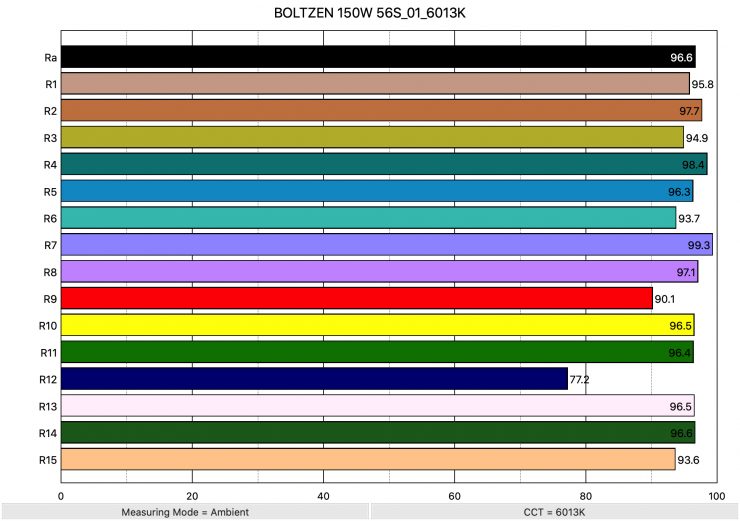
Above you can see that when the light was set in its full spot position and set to 5600K, it recorded an average CRI (R1-R8) of 96.6 and an extended CRI (R1-R15) of 94.67. For replicating skin tones accurately it recorded 90.1 for R9 (red), 96.5 for R13 (closest to caucasian skin tones), and 93.6 for R15 (closest to Asian skin tones). These figures were pretty good.
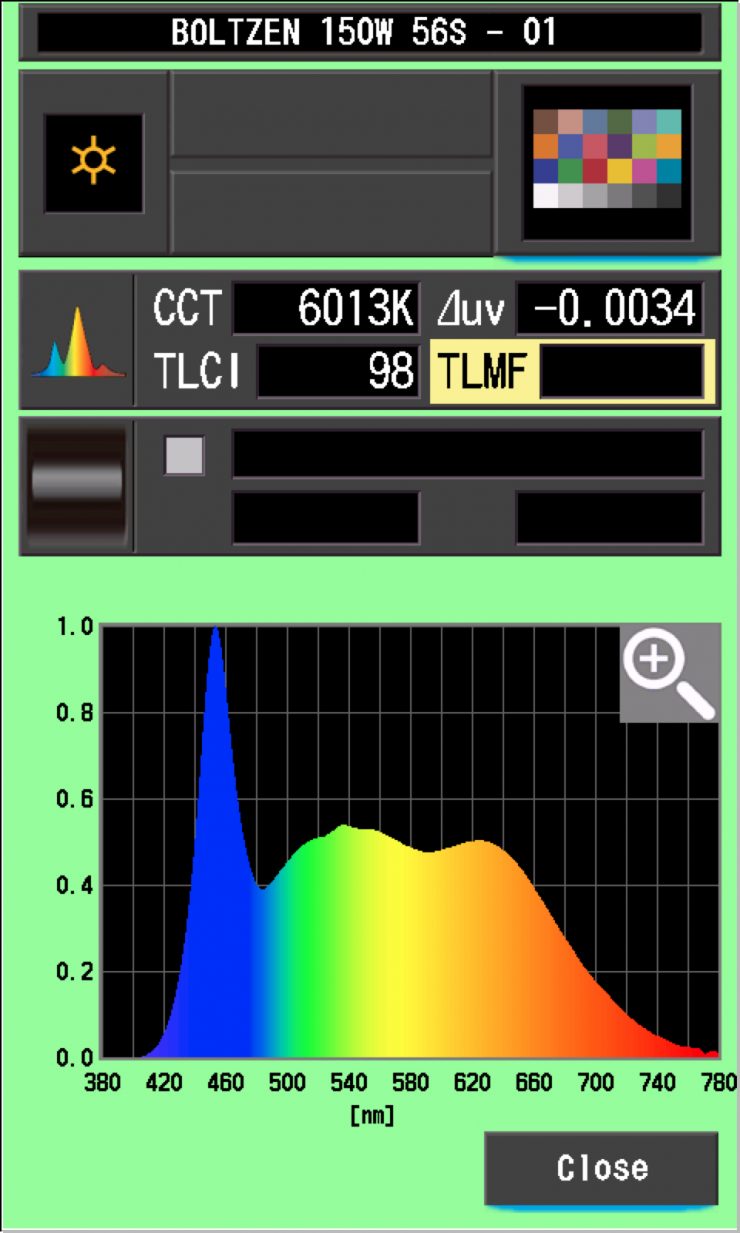
The light when set at 5600K also recorded a TLCI score of 98.
3200K
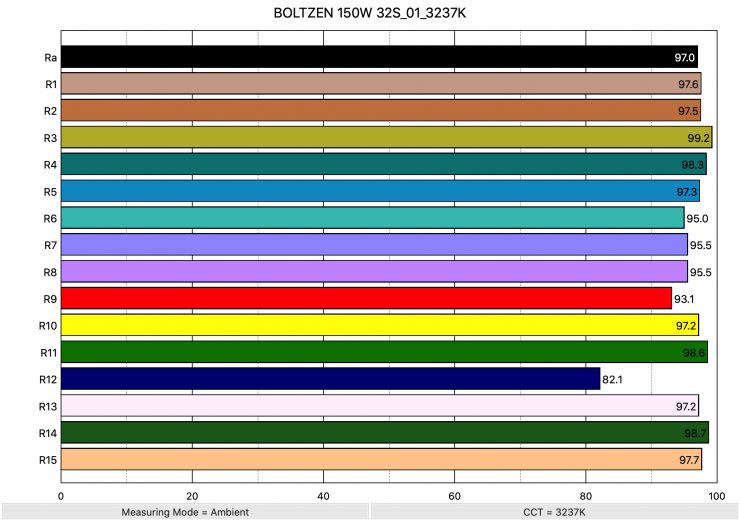
Above you can see that when the light was set in its full spot position at 3200K it recorded an average CRI (R1-R8) of 97.0 and an extended CRI (R1-R15) of 96.03. For replicating skin tones accurately it recorded 93.1 for R9 (red), 97.2 for R13 (closest to caucasian skin tones), and 97.7 for R15 (closest to Asian skin tones). These figures were good for a 3200K source.
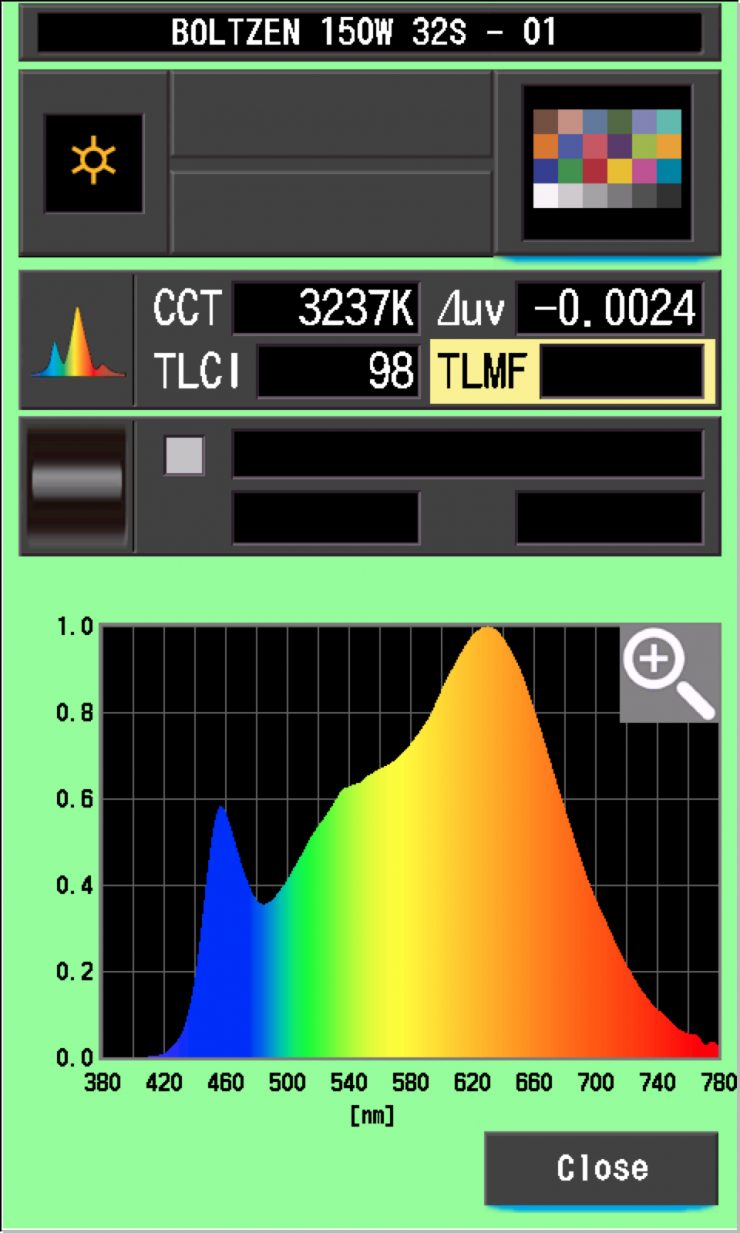
The light when set at 3200K also recorded a TLCI score of 98.
CC Index & ⊿uv
The CC Index displays the CC correction value and whether any magenta or green need to be added or subtracted. 1 CC corresponds to 035 Kodak CC values or 1/8 Rosco filter values. Any reading less than +1.00 or -1.00 and you’re probably not going to need to make any kind of adjustment. The ⊿uv is the value to show how much this light is away from being an ideal light source (black body radiation = incandescent lamp). As with the CC Index you want this number to theoretically be zero. Kelvin is not a linear value, so we need to convert from Kelvin to MK-1 to compare the values of color temperature. To calculate from Kelvin to Mired is MK-1= 1*1000000/Kelvin. While this may sound confusing, it is the only way of measuring if the Kelvin shift is significant enough to warrant having to use a filter for correction. Below are the results for the CAME-TV when used in its full spot position:
Kelvin Vs MK-1
| Kelvin | Difference in K | MK-1 | Difference in MK-1 | |
| SET VALUE | 3200K | 0 | 312.5 | 0 |
| ACTUAL READING | 3237K | 37 | 308.9 | 4.4 MK-1 |
| SET VALUE | 4400K | 0 | 227.27 | 0 |
| ACTUAL READING | 4409K | 9 | 226.80 | 0.47 MK-1 |
| SET VALUE | 5600K | 0 | 178.57 | 0 |
| ACTUAL READING | 6013K | 413 | 166.30 | 12.27 MK-1 |
These figures might look confusing, but what it tells me is that the light is very Kelvin color accurate at most temperatures, expect at 5600K. However, it is a lot more accurate at 5600K in its full flood position. Any MK-1 score that is under -9/9 means you wouldn’t have to use any color correction gels. With this light at 5600K, you would need to correct the light by either making adjustments to the Kelvin color temperature on the light itself or by using color correction gels.
CC INDEX & ⊿uv
| CC INDEX | ⊿uv | |
| 3200K | 0.1G | -0.0024 |
| 4400K | 0.5G | -0.0060 |
| 5600K | 0.5G | -0.0034 |
SSI
SSI (Spectral Similarity Index) was developed by the Sci-Tech Council of the Academy. SSI gives me the ability to set any light as a standard, or use predefined standards (such as CIE D55), and then give other lights an SSI score based upon how well they will match standards such as CIE D55 measure spectral response and compare it directly against an ideal light source.
SSI is a much better way to judge an LED light than CRI or TLCI.
SSI is useful to see how well different lights will play together. As the Sekonic C-800 Spectromaster can measure SSI, I decided to test out the Intellytech to see how it performed.
3200K
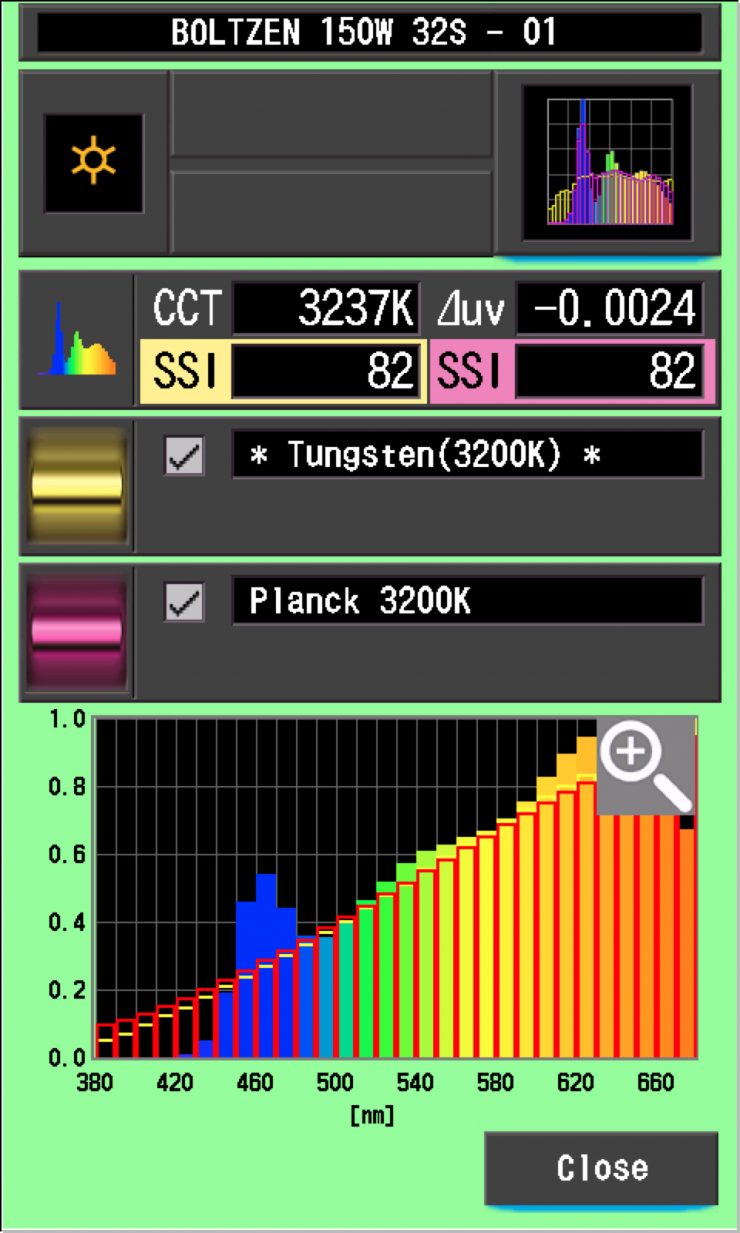
Above are the scores for the light when used at 3200K. The scores show that the light does a reasonably good job of accurately replicating a 3200K (Tungsten) source. Any score in the low 80’s is fairly good for a 3200K LED light.
5600K
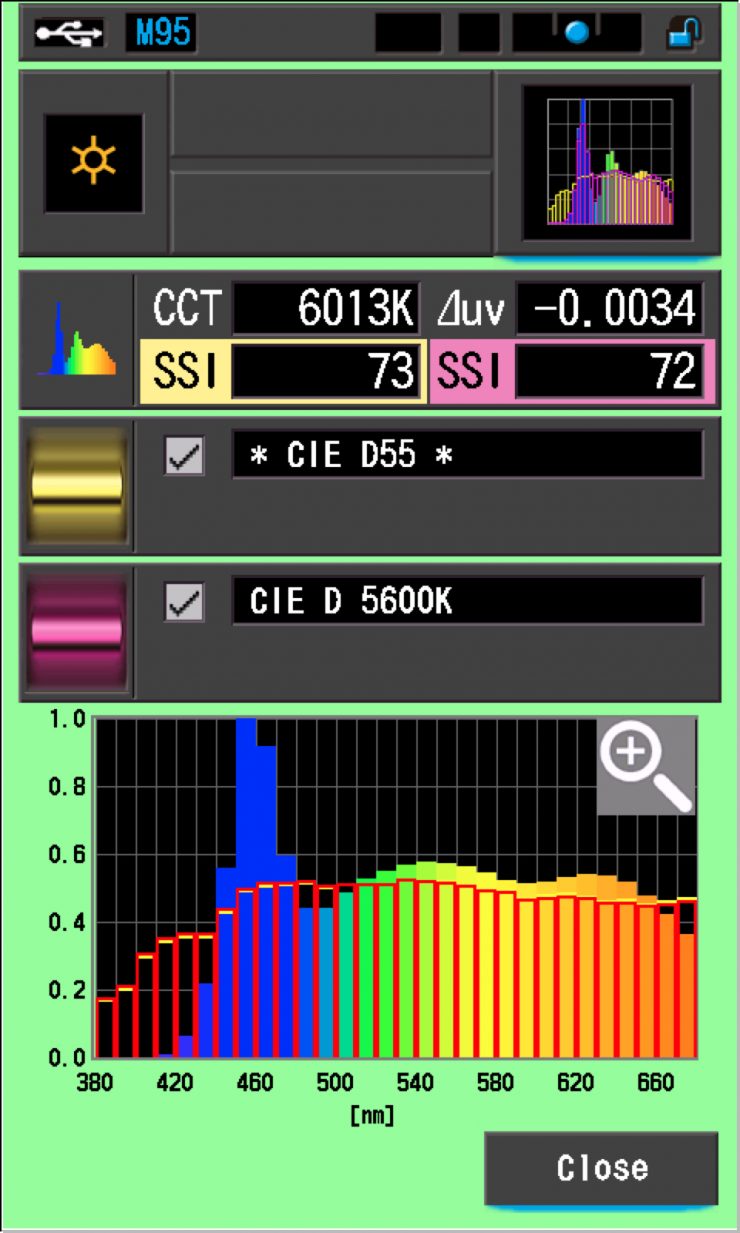
Above are the scores for the light when used at 5600K. The scores show that the light does a good job of accurately replicating a CIE D55 source. A score in the low to mid-70s is very typical for a 5600K LED light.
The main reason we want to record SSI scores is so we can see how well they match with other lights. I was curious to see how well the CAME-TV matched the Dedolight DLED7 Turbo Bi-Color at both 3200K and 5600K. Below you can see the results.
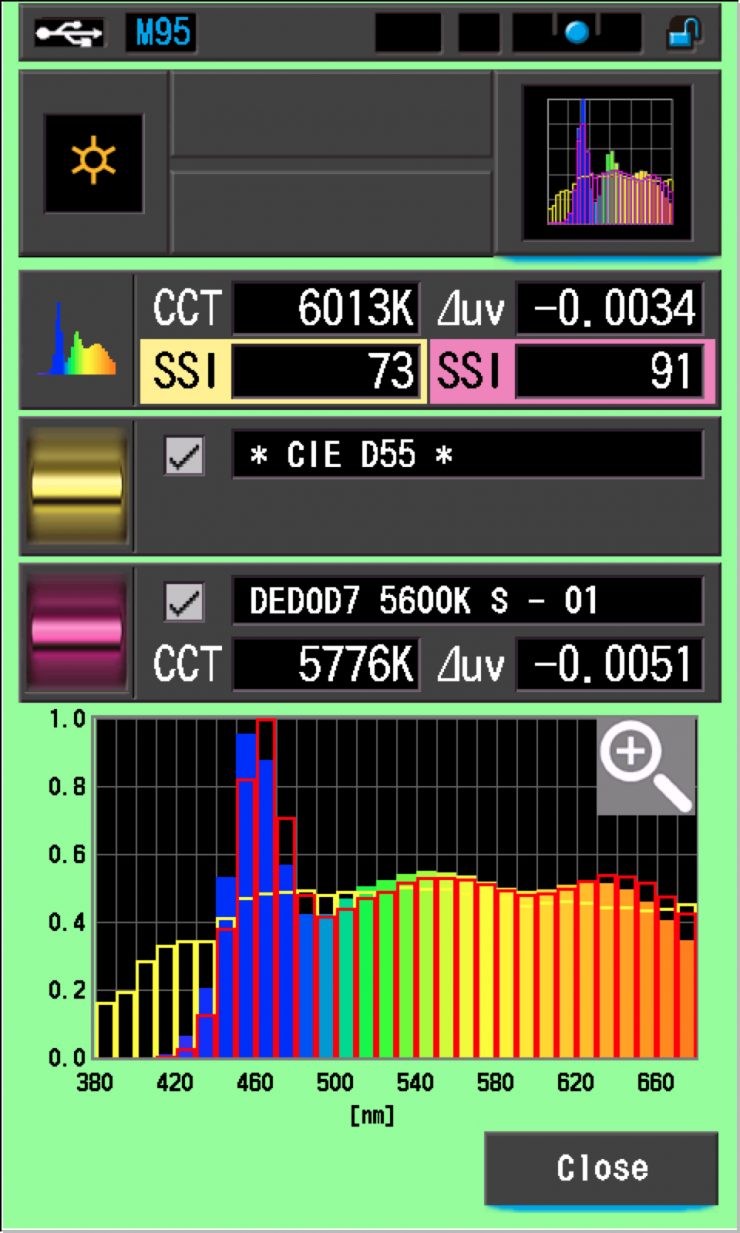
As you can see theCAME-TV and the Dedolight are not a perfect match when used at 5600K. A score of 91 is still pretty good, but you would need to adjust both lights slightly to get them to the point where they were a closer match.
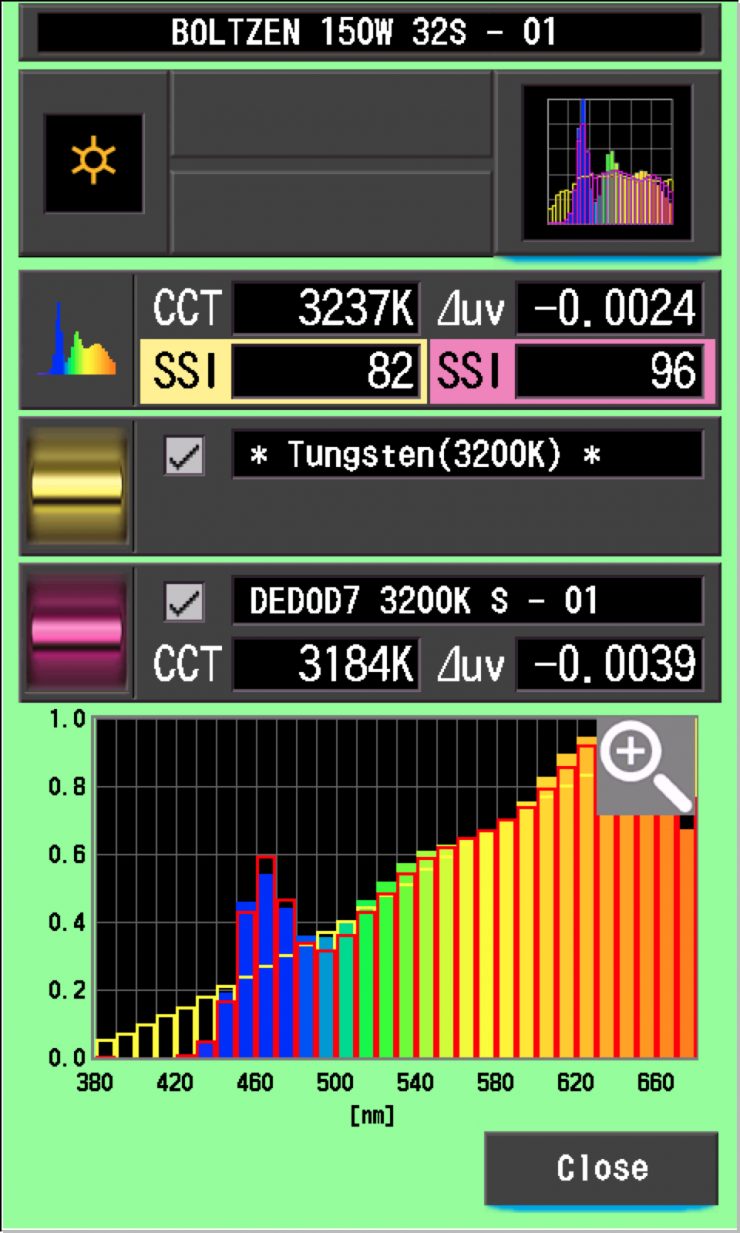
At 3200K the CAME-TV and the Dedolight are a better match than they are at 5600K.
Being able to measure SSI in advance and compare different lights you may be using together is a great way of finding out what lights will work together and what adjustments need to be made.
Spectral Distribution
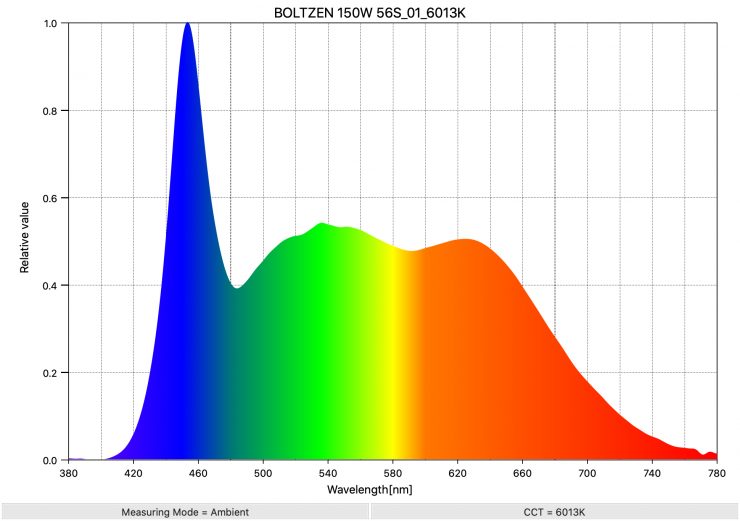
Above you can see the spectral distribution of the CAME-TV when it is set at 5600K. The spectral distribution is reasonably good and there aren’t any massive spikes.
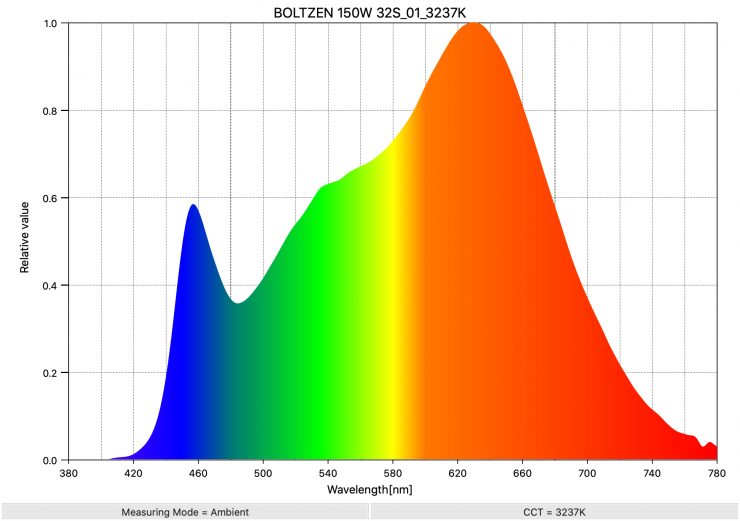
Above you can see the spectral distribution of the light when it is set at 3200K. The spectral distribution is nice and full and the light only has the slightest bump in green.
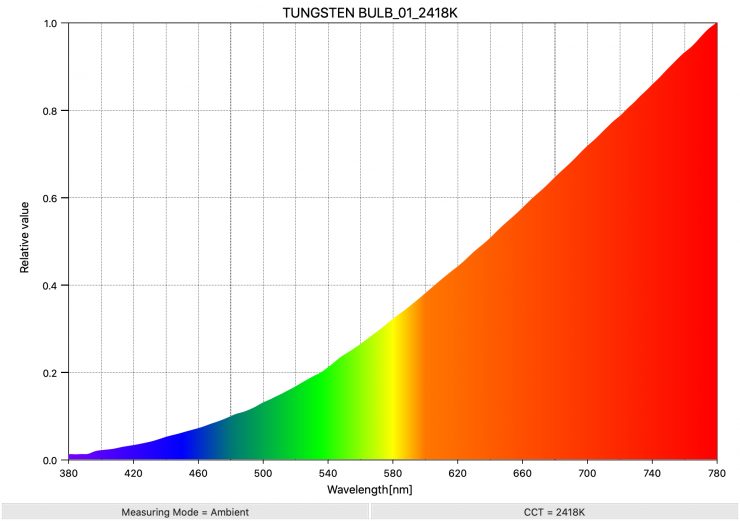
As a comparison, above you can see what the spectral response of a tungsten light bulb looks like.
So how does the light actually perform?

It’s important to remember that these lights by their very design are hard light sources and they will produce strong shadows. They are not designed to be used as a soft key light even though you can add diffusion or attach a softbox. Most shooters would use fresnel style lights like this to light up backgrounds, or when they need to specifically direct and control a light by spotting it up on a small item or area. There are of course other areas where a mid-sized LED Fresnel like this can also be used to good effect, such as using the light as an indirect source by bouncing it off a wall or ceiling, etc.
The smaller sized Boltzen 30w and 55w fresnel lights suffer from quite a harsh fall off and color fringes on the edge of the beam. So is the 150w any better or does it exhibit the same traits? As I mentioned earlier, the light doesn’t exhibit any noticeable color fringing, but the fall off is quite harsh.
It is nice that you can run this light off a flight safe camera battery. That, along with its reasonably compact size, and decent output makes it a good light to travel with.
Fresnel LED lights like this can be a good solution if you can only take one light with you. Because it is a hard lighting source you can use it to bounce off surfaces, spot it up to light objects from a distance, or diffuse it to create a softer lighting source.
Competition
You would actually think that there would be a lot of 150W bi-color LED Fresnel lights on the market, but there actually isn’t. The only other 150W bi-color LED Fresnels I know of are the ikan Helia 150W Bi-Color LED Fresnel Light ($499.99 USD), and the HIVE LIGHTING Hornet 200-C Adjustable Fresnel Omni-Color LED Light ($2,279 USD).
Other lights that are similar include:
- Intellytech Light Cannon F-165 Bi-Color High Output LED Fresnel with DMX ($589 USD)
- Intellytech Light Cannon X-100 Fresnel with V-Mount Battery Plate, 100W ($699 USD)
- Ledgo Bi-Color LED Fresnel Studio Light with DMX ($1,125 USD)
- Nanguang CN-100FC Bi-Color LED Fresnel ($639 USD)
- Fiilex Q500-AC 5″ Fresnel LED Light ($1,995 USD)
Price
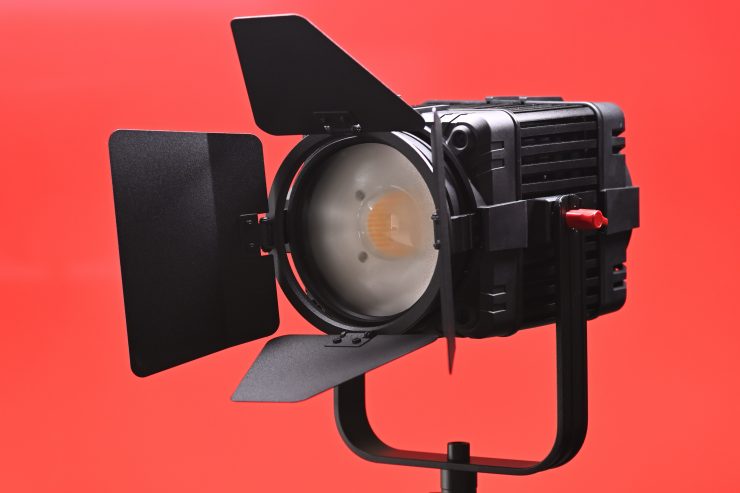
It has to be said that CAME-TV gives you good value for money. The Boltzen 150W Bi-Color Fresnel reatils for $499 USD.
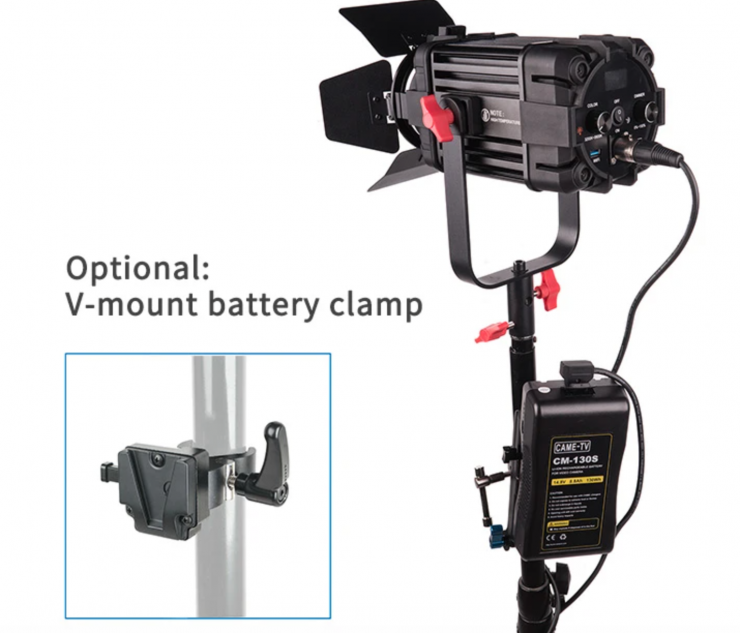
Optional extras include a Bowens accessory mount adapter that allows you to mount a wide array of cheaper photographic softboxes and other light modifiers. There is also a V-mount battery plate option with light stand clamp and a V-Mount Li-Ion Battery 130Wh (F130W). There is also the Boltzen WiFi Controller (BZ-WIFI).
Conclusion

The CAME-TV Boltzen 150W Bi-Color Fresnel Focusable LED Daylight offers a lot of value for money and the color rendering performance is pretty good. The output is good for a light of this size. Yes, it has a harsh fall off, but it doesn’t exhibit any noticeable color fringing.
I like that CAME-TV continues to improve their build quality. The 150W Bi-Color Fresnel is an affordable option with decent output and it can be powered at 100% off a flight safe battery.
While there is nothing particularly outstanding about the light, it is a solid offering from CAME-TV that is sure to suit a lot of people’s needs.
Like what we do and want to support Newsshooter? Consider becoming a Patreon supporter and help us to continue being the best source of news and reviews for professional tools for the independent filmmaker.

